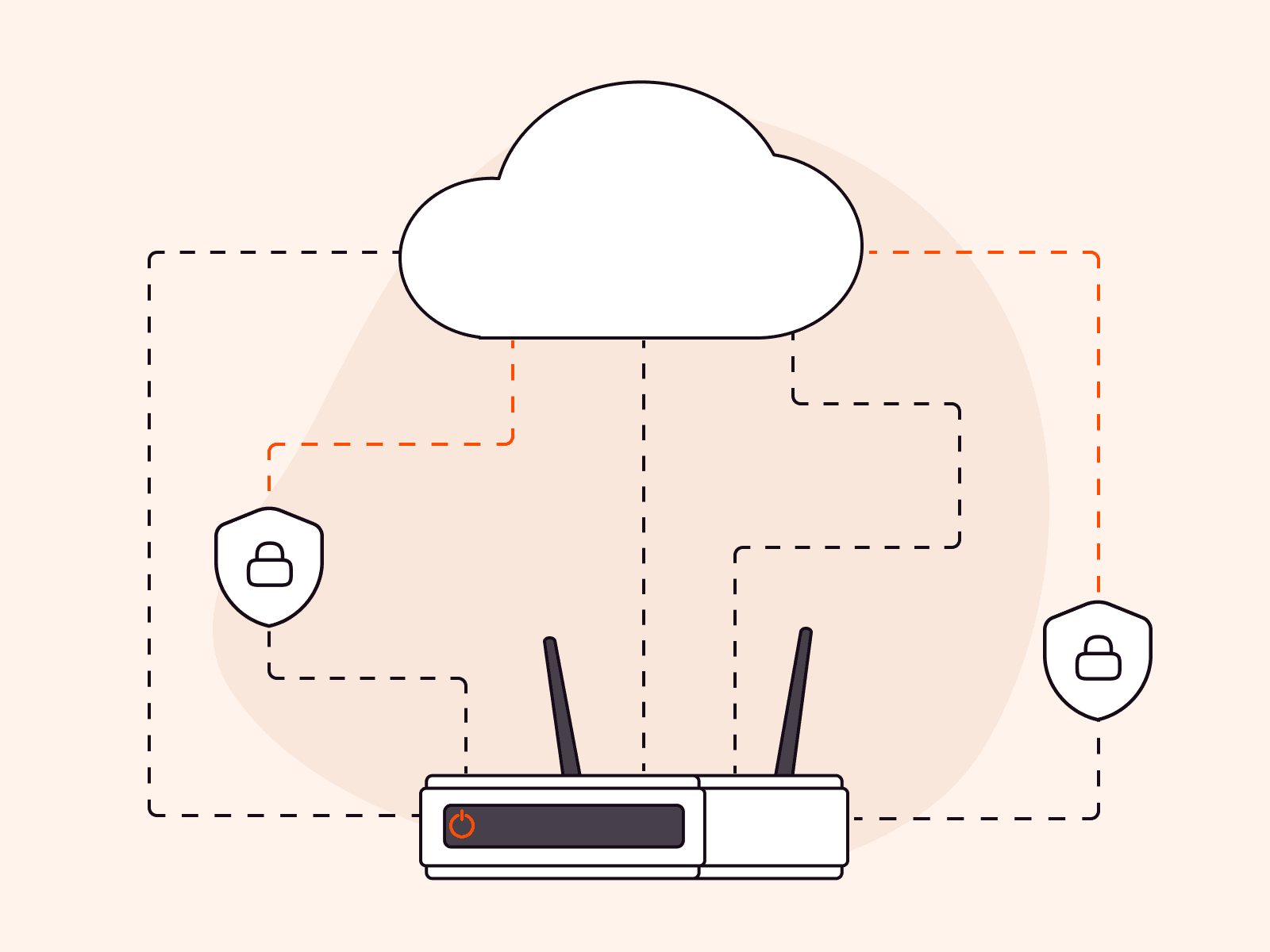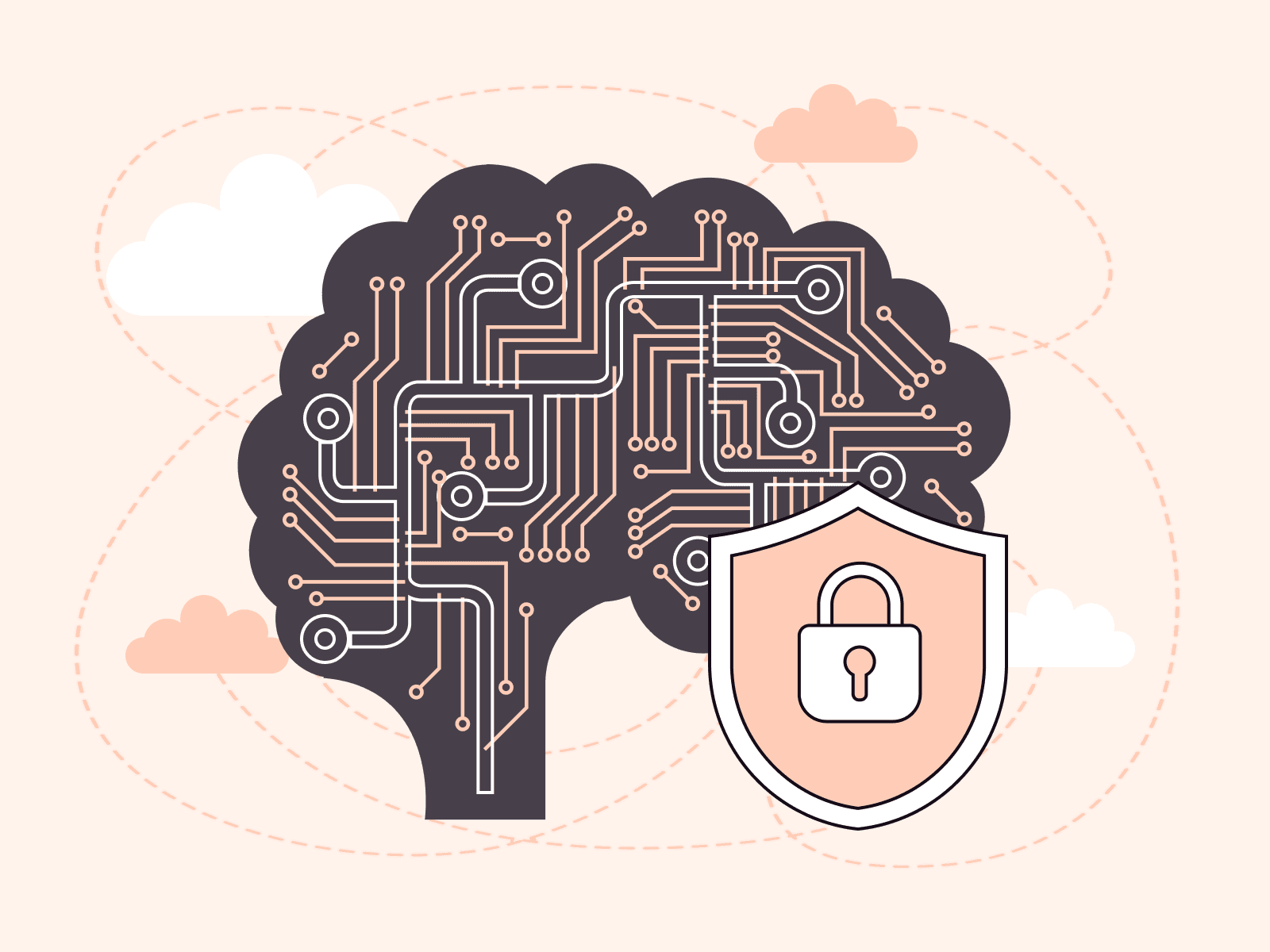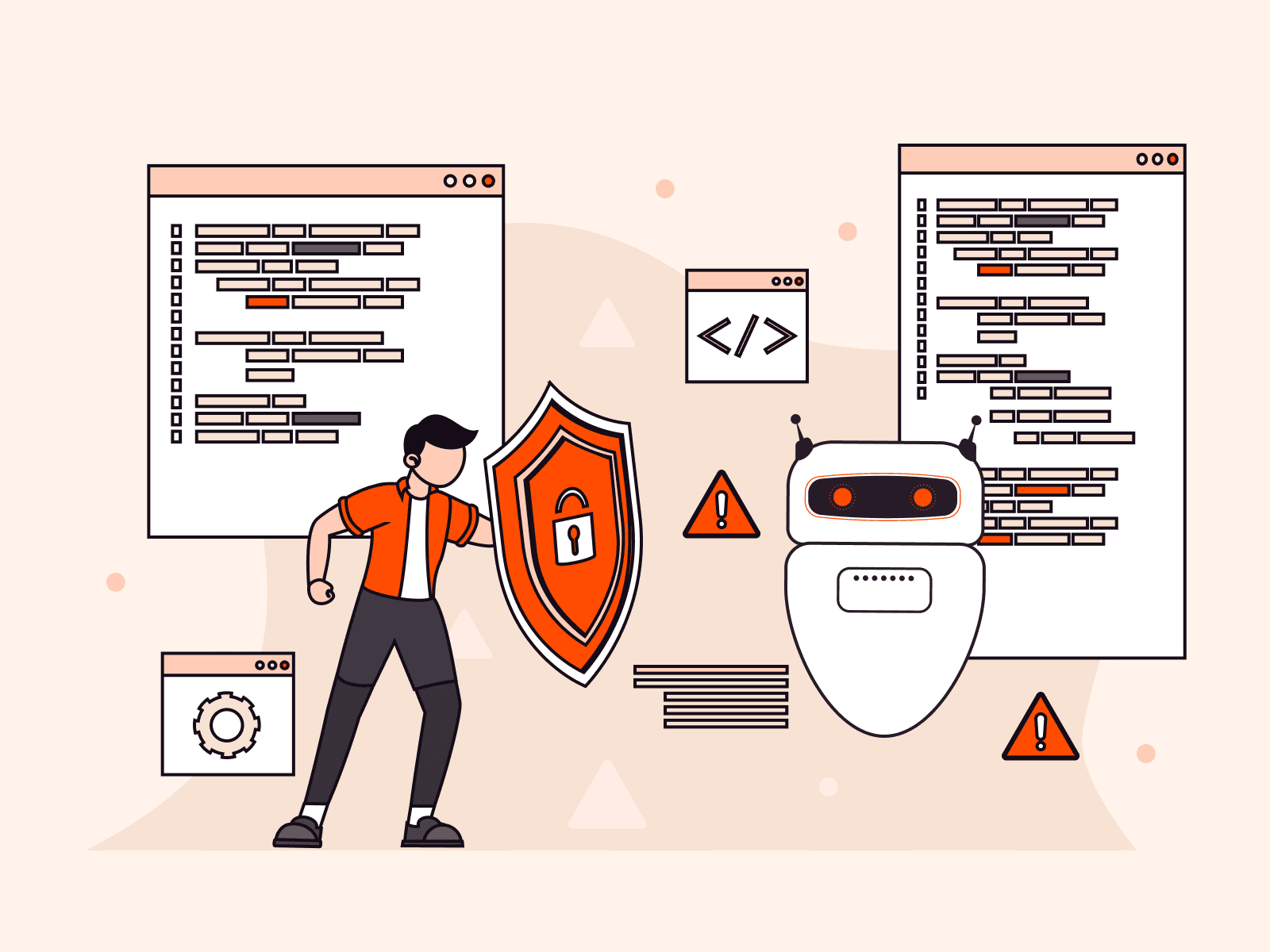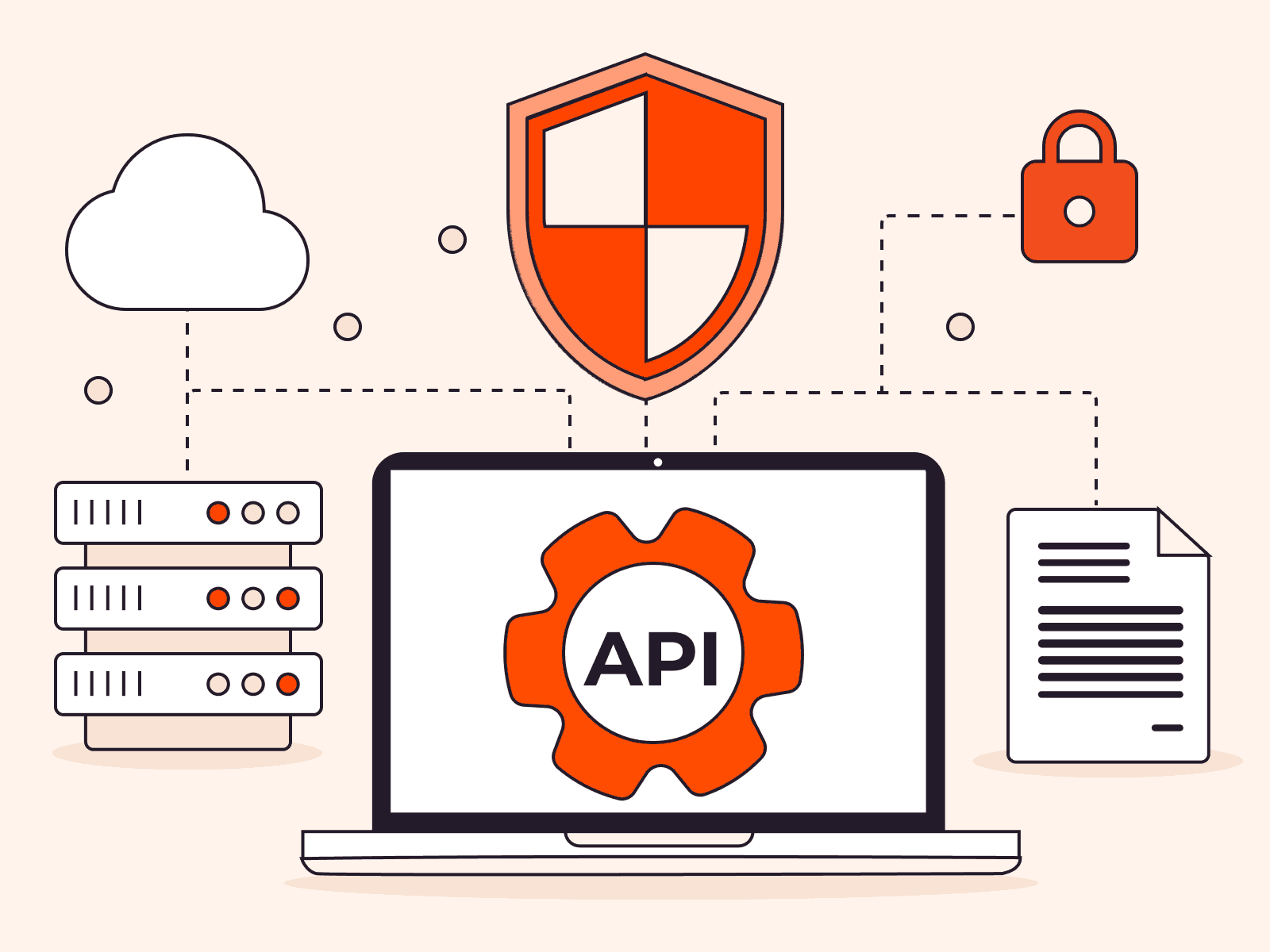Zero Trust is a security approach that assumes no one inside or outside the network can be automatically trusted, so verification is required for every user and device trying to access resources in an organization, every time they request access. In this article, we’ll explore what zero trust is, why and how you should implement it, what challenges to look out for, and best practices.
What Is Zero Trust?
Zero trust, also known as perimeterless security, is a security model that assumes that an organization is constantly at risk from internal and external factors. There’s no official standard or certifying body for zero trust; instead, it’s a conceptual framework, a way of thinking about security. It enables organizations to build and strengthen defenses around the mantra “never trust, always verify,” meaning that every application, endpoint, and user in an enterprise’s IT environment is treated as a potential threat.
As a result, any user or device attempting to access a digital resource must undergo authentication processes to prove legitimacy every time it seeks access to the organization’s network or assets. Gaining access to IT assets once does not mean that a user or device is authorized permanently. Authentication will need to occur anew every single time. For example, if you log into your work email account on Monday morning using two-factor authentication, on Tuesday you’ll have to do the same thing again to access your emails.
Zero trust is piquing the interest of organizations of all sizes across all sectors because of its stringent attitude towards digital security, increasingly important in the age of remote work. The global market is forecasted to grow at a compound annual rate of 17.3% from 2022 to reach $60.7 billion by 2027. According to Gartner, 10% of large enterprises will have a mature zero trust program by 2026.
What Defines a Zero Trust Infrastructure?

As mentioned, there are no official standards for zero trust security. A zero trust security model is a combination of multiple criteria, often referred to as the pillars of zero trust because they are the foundation upon which a zero trust model is implemented.
Identity
Establishing and managing user and system identities is the foundational layer of zero trust security. In a zero trust model, it’s vital to provision and deprovision digital identities optimally. Key tools for protecting identities include:
- Access control lists (ACLs)
- Identity and access management (IAM)
- Single sign-on (SSO)
- Multi-factor authentication (MFA,) including:
- One-time passwords (OTPs)
- Email authentication
- Biometrics
The principle of least privilege is essential to this pillar, and ensures that users access only the IT resources necessary for their tasks. For example, a regular employee might have access to only the files and software relevant to their job function, while an IT administrator would have broader access to manage system settings and security protocols. Any non-essential privileges should be revoked; in other words, if an employee changes roles and no longer requires access to a specific database, that access should be immediately revoked to minimize security risks.
Context-based access restrictions are defined by criteria such as the user’s location, endpoint type, and access time, determining the extent of access to resources. For instance, a user accessing the system from a company-approved device within the office might have full access to resources, while the same user attempting to access the system from a public Wi-Fi hotspot might find themselves with restricted capabilities. Similarly, access could be time-sensitive, allowing certain actions only during business hours.
Device
With the proliferation of smart devices and IoT, ensuring their security and integrity is an indispensable aspect of a zero trust approach. All enterprise endpoints, BYOD devices, and IoT machines that are connected to company networks should be in a centralized inventory and management system to ensure real-time monitoring and ad-hoc authentication. Regular assessment of device hardware and timely software patching are vital in a zero trust environment.
Network
Given that a network acts as the circulatory system for data transmission, ensuring its security and integrity becomes paramount in a zero trust framework. Network microsegmentation is one important part of this, and entails dividing the network into optimized segments for isolated monitoring and traffic control. Encryption is also essential, ensuring that data in transit is inaccessible to unauthorized users.
Data
Data is a paramount asset, with the prevention of breaches being the primary goal of zero trust. Protecting data involves understanding its entire lifecycle, from collection to disposal, and employing strategies like tokenization, masking, and encryption. For instance, a healthcare provider might collect patient data, then tokenize the Social Security numbers and encrypt medical records. This information can then be stored in a secure cloud environment, accessible only through multi-factor authentication, ensuring that even if a breach occurs, the sensitive data remains unreadable.
Thorough visibility into IT infrastructure is key—for example, via monitoring tools like Security Information and Event Management (SIEM.) These tools can help organizations track suspicious activity in real-time. Consider a retail business that uses SIEM to monitor traffic to its online store. If a series of failed login attempts from a foreign IP address are detected, the SIEM system can flag it for immediate review, possibly preventing unauthorized access to customer data. This aids in vulnerability identification, breach mitigation, and precise incident remediation.
Applications and Workloads
This pillar encompasses application workloads, virtual machines, and containers. These components serve as vital communication points within IT infrastructures. Such components in a zero trust model are assumed hazardous and are continually monitored, tested, authenticated, and authorized.
Furthermore, automation ensures precision in this process. For instance, an automated workflow could routinely check that all virtual machines are running the latest security patches and flag any that aren’t for immediate attention. Orchestration allows for the efficient coordination of different tools, technologies, and practices. In a real-world scenario, orchestration could mean that as soon as a vulnerability is detected in one part of the system, countermeasures like isolating affected components can be automatically initiated, while simultaneously alerting the security team.
Why Should You Implement Zero Trust?
There are quantifiable advantages to implementing zero trust. Organizations with a zero trust security model saved close to $1 million in data breach costs compared to those with traditional security models.
Protect Legacy Infrastructure
Though legacy infrastructure is often seen as a security problem by companies, it’s not always financially realistic to replace it all at once. The healthcare and banking sectors still heavily rely on outdated and highly patched applications like databases and payment systems. These critical legacy systems can’t be replaced overnight without compromising business continuity.
Zero trust can help to protect and maximize the use of these vulnerable legacy systems before and during digital transformation initiatives. For example, consider a large healthcare provider that still relies on an older electronic health records (EHR) system. An immediate transition to a new system could disrupt patient care and introduce a variety of complications. By implementing a zero-trust approach, the healthcare provider can add an extra layer of security to this legacy system. Any user or system trying to access the EHR must undergo stringent authentication and authorization checks. Even within the network, the system is continuously monitored for unusual activity or vulnerabilities. This allows the healthcare organization to continue operating without disruption while gradually transitioning to more modern infrastructure.
Defend Against Phishing
Phishing campaigns are organized efforts by threat actors to extract sensitive personal information from victims by pretending to be legitimate requests. The different types of phishing include spear fishing, which targets an individual rather than a group, whaling, which targets highly-ranked personnel like C-suite executives, email phishing, which tricks a victim into providing sensitive information, and pharming, which redirects victims to illegitimate websites disguised as familiar websites.
Zero trust features like MFA, Mobile Device Management (MDM), micro-segmentation, and remote access policies can help enterprises defend against phishing campaigns by adding multiple layers of security that validate the identity of users and the health of their devices before granting access to the network. These measures limit the potential impact of a successful phishing attack by requiring additional credentials or device verification, thus making it more challenging for threat actors to exploit stolen information for unauthorized access.
Enable Safe Global Collaboration
An increasing number of enterprises are entering new markets and working with foreign entities. This means that more servers, privileged digital identities, and endpoints will be added and interconnected within an enterprise IT environment.
Zero trust can help ensure safe, compliant, and productive communication by implementing stringent access controls and continuous monitoring to verify the identity and trustworthiness of both users and devices. This minimizes the attack surface and reduces the risk of unauthorized access, even within a complex, multinational IT environment. By employing principles like least-privilege access and real-time verification, zero trust ensures that only authenticated and authorized entities can access sensitive information.
Manage Third-Party Access Risks
Businesses increasingly rely on third-party applications and add-ons to enhance their IT environments. However, third-party vulnerabilities accounted for 13% of data breaches in 2022 and remain a significant threat. Examples of vulnerable third-party applications include web browsers like Chrome and Safari, communication and collaboration apps like Zoom and Microsoft Teams, and a range of analytics tools and plug-ins.
Zero trust can ensure that third-party entities get only the bare minimum access to company networks to stay effective by implementing least-privilege access controls, real-time monitoring, and multi-factor authentication for any external software or services. This means third-party applications are only given the permissions they absolutely need to function, and their activities within the network are closely monitored to detect any anomalous or suspicious behavior.
Encompass Distributed IT Infrastructures
Since zero trust is bound by context-based logic and policies, it can easily encompass distributed and scaling IT infrastructures. A distributed cloud model features numerous cloud infrastructures and services operating across IT environments, including on-premises data centers, public clouds, and third-party data centers. Distributed cloud models are typically controlled from a single centralized console.
With zero trust, companies can confidently grow their multicloud infrastructures knowing that their security program can protect rapidly-increasing identities, devices, networks, data, applications, and workloads. For example, a multinational retailer with multiple e-commerce platforms across different clouds can use zero trust to enforce strict access controls and continuous monitoring. This ensures all parts of their complex environment—public clouds, on-premises data centers, and third-party services—are secure, allowing for safe and scalable growth.
Prevent Malware
Malware is any software that’s designed with malicious intent. Undetected malware can cost companies millions in damages. The most common types of malware are ransomware, which locks a victim’s access rights until a ransom is paid, spyware, which secretly logs information about a victim’s digital activities, and Trojans, which camouflage as legitimate software to hijack a victim’s system.
Zero trust ensures that malware is detected and remediated in real-time before it can cause any lasting damage by enforcing strict access controls, continuous monitoring, and automated response protocols. In a zero trust environment, all network traffic, including that originating from inside the organization, is considered potentially risky and is closely scrutinized. Files and software are regularly scanned for malicious signatures, and users are required to go through multi-factor authentication before gaining access to network resources. Any deviation from established behavior patterns triggers automatic response mechanisms, such as isolating affected endpoints or revoking access rights, thereby containing the spread of malware and facilitating rapid remediation.
Facilitate Digital Transformation
According to Gartner, 89% of board directors claim that digital transformation is fundamental to their growth strategies, with 35% already having achieved or being on their way to doing so. Digital transformation can’t be achieved unless the challenges associated with the above points are mitigated via zero trust security.
Zero trust ensures that digital-centric growth strategies are secure and successful by bringing a holistic and strict attitude to security to digitally minded companies. For instance, a media company transitioning from print to digital can use zero trust to securely manage increased online traffic and protect digital assets. By implementing stringent access controls and ongoing monitoring, the company can focus on its digital strategy without worrying about security breaches.
Challenges of Zero Trust Implementation
While zero trust implementation has obvious benefits, it’s not a simple concept to apply in practice for the following reasons:
- Lack of expert guidance: Zero trust implementation can be a highly challenging and technical process. Businesses often struggle to transition from older security models to zero trust without the help of experts, which may become a financial burden.
- Implications on productivity: The objective of zero trust is to streamline access to critical IT resources by authenticated users. However, during implementation, employees may struggle to access resources and navigate a changing IT environment, and this can potentially affect productivity.
- Legacy IT infrastructure: Legacy IT infrastructure may not be easy to integrate into a zero trust architecture, making it a hurdle to overcome during the implementation process.
- Buy-in from key stakeholders: The implementation of a zero trust security model needs the buy-in of more than just IT and security teams. All key stakeholders, including the board of directors and C-suite executives, need to have confidence in zero trust and understand the organization-wide advantages it can provide.
- Highly technical process: While zero trust is more of a framework than a technology, its implementation is still a highly technical process that can be time consuming and resource intensive.
- High costs: The long-term benefits of zero trust include cost savings via optimized budgets and money saved from preventing data breaches. However, the implementation process can be expensive, depending on the size of the organization and the scope of the IT environments. The long-term cost-savings typically outweigh the short-term expenses, but require upfront capital investments.
- Lack of holistic strategy: Even the most meticulous execution can yield poor results if zero trust implementation isn’t bound by a holistic strategy. The success of zero trust implementation relies heavily on clarity and intent.
Best Practices When Implementing Zero Trust
In order to experience the full benefits of zero trust and overcome its potential implementation challenges, adhere to the following best practices.
Prioritize Network Segmentation
Businesses should divide their network into small and isolated microsegments. Network segmentation can streamline workloads, enable smooth traffic flows, and ensure that security incidents are isolated and easily solvable.
To divide your network into isolated microsegments, begin by conducting an inventory of your existing IT assets, such as servers, databases, and workstations. Use network mapping tools to visualize data traffic flows between these assets. Once you have this data, consult with your IT and security teams to identify potential risk points and determine how to segregate assets based on factors like their function, the sensitivity of their data, and their exposure to security risks.
Use access control lists (ACLs) to specify which users or system processes are granted access to each microsegment. Configure firewalls to monitor and control incoming and outgoing network traffic based on an organization’s previously defined security policies.
Implement software-defined perimeters (SDPs) to provide a more flexible and adaptable network security framework. By combining these elements, you can create a segmented network that not only enhances performance and traffic management but also bolsters your security posture.
Encrypt Data
Data is the main target for threat actors. Therefore, companies should encrypt all data, both at rest and in transit, so that only authorized and authenticated users can access and read it. Data encryption transforms plaintext into ciphertext, which can only be deciphered with a specific key. The two primary kinds of data encryption, symmetric and asymmetric, depend on whether the key for hiding and unveiling data is the same.
Businesses should ideally use a mix of symmetric encryption styles and asymmetric encryption styles. Utilizing both symmetric and asymmetric encryption methods allows businesses to balance speed, security, and compliance requirements. Symmetric encryption is faster and less resource intensive, making it ideal for encrypting large data sets. However, it uses a single key for both encryption and decryption, posing a risk if the key is compromised. Asymmetric encryption uses a public key for encryption and a private key for decryption, eliminating the key distribution problem inherent in symmetric encryption and adding functionalities like digital signatures. By combining both encryption styles, businesses can achieve a layered security approach that meets regulatory standards and is resilient against diverse cyber threats.
Conduct Regular Red Teaming
Companies should regularly pretend to hack into their own systems to see if their security measures are working well. This practice, known as “red teaming,” can be done by their own tech staff or by hiring outside experts. The goal is to find any weak points in their security. They should check how a hacker could get in, what damage they could do, how far they could move within the system, and what the company’s ability is to spot and stop the attack as it happens. This helps make sure the company’s zero trust approach to cybersecurity is effective.
Elevate Endpoint Security
Hackers are more frequently targeting both company-owned and personal devices that connect to business networks. So, it’s important for businesses to focus on making these devices—known as endpoints—as secure as possible. To do this, companies should keep a detailed list of all such devices, make sure they meet certain security standards before they can connect to the network, and control who can access what information on a given device.
They should also use special tools to watch for signs of hacking attempts on these devices and take action if they detect anything suspicious like antivirus software, intrusion detection systems (IDS), and endpoint detection and response (EDR) solutions. These tools provide real-time analysis and help in identifying, managing, and mitigating risks effectively. For example, EDR software continuously monitors and collects data from endpoints to detect unusual patterns or behaviors that could indicate a security threat. If a potential threat is detected, the EDR software can automatically isolate the affected device from the network, preventing the spread of malware and providing time to investigate and remedy the issue.
Develop Remediation Plans
The “assume breach” mentality states that data breaches are inevitable. Therefore, companies should always be ready with updated and tested remediation plans. Businesses must define acceptable and unacceptable cyber risks. Acceptable risk is typically low-priority vulnerabilities that do not affect business-critical processes. Remediation plans need to center around unacceptable risks and critical vulnerabilities. It’s also important to plan which teams, stakeholders, and vendors need to be notified and involved in the event of a security breach.
Businesses must define which remediation processes will be automated and which will need manual intervention. Start by listing out all the remediation steps typically taken after identifying a cybersecurity incident. For each step, decide whether it can be automated or if it requires human judgment and action. For example, isolating a compromised system from the network could be automated, but deciding the next course of action might need manual review. Document these decisions in a remediation playbook so everyone on the team knows what to do during a security event.
Most importantly, remediation includes reporting on security incidents and using those insights to strengthen the next iteration of the zero trust architecture. After an incident has been resolved, gather all relevant data and create a detailed report. This should include what the vulnerability was, how it was exploited, what actions were taken to remedy it, and how effective those actions were. Share this report with key stakeholders, including IT teams, management, and any third-party vendors involved. Use the findings from this report to update your zero trust architecture—this could mean revising access controls, updating software, or improving monitoring capabilities. Make sure to also update your remediation playbook based on what you’ve learned.
Employee Orientation
Every employee needs to be well-versed in the zero trust security approach, as it’s essential to the company’s overall cybersecurity. Training sessions should be mandatory, highlighting key concepts such as “least privilege,” which means only giving employees the minimum levels of access—or permissions—they need to accomplish their tasks. This should be more than a one-time orientation; it must be integrated into ongoing HR policies and employee development programs. Staff must fully grasp how their daily work activities can impact the company’s security. While zero trust is built on various technologies and tools, its success relies on the consistent, responsible actions of each and every team member. Therefore, instilling a culture of continuous security awareness is essential.
Conclusion
Zero trust security is vital to protect your most valuable data and IT assets across multicloud environments. With the knowledge you’ve gained from this article, you can navigate the complexities of zero trust, ensuring a robust and effective security implementation.
Interested in reaping the benefits of zero trust? Explore Gcore to see how world-class DDoS protection, web application security, and bot protection can transform your business and strengthen an existing, in-progress, or forthcoming zero trust security architecture.
Related articles
Subscribe to our newsletter
Get the latest industry trends, exclusive insights, and Gcore updates delivered straight to your inbox.






